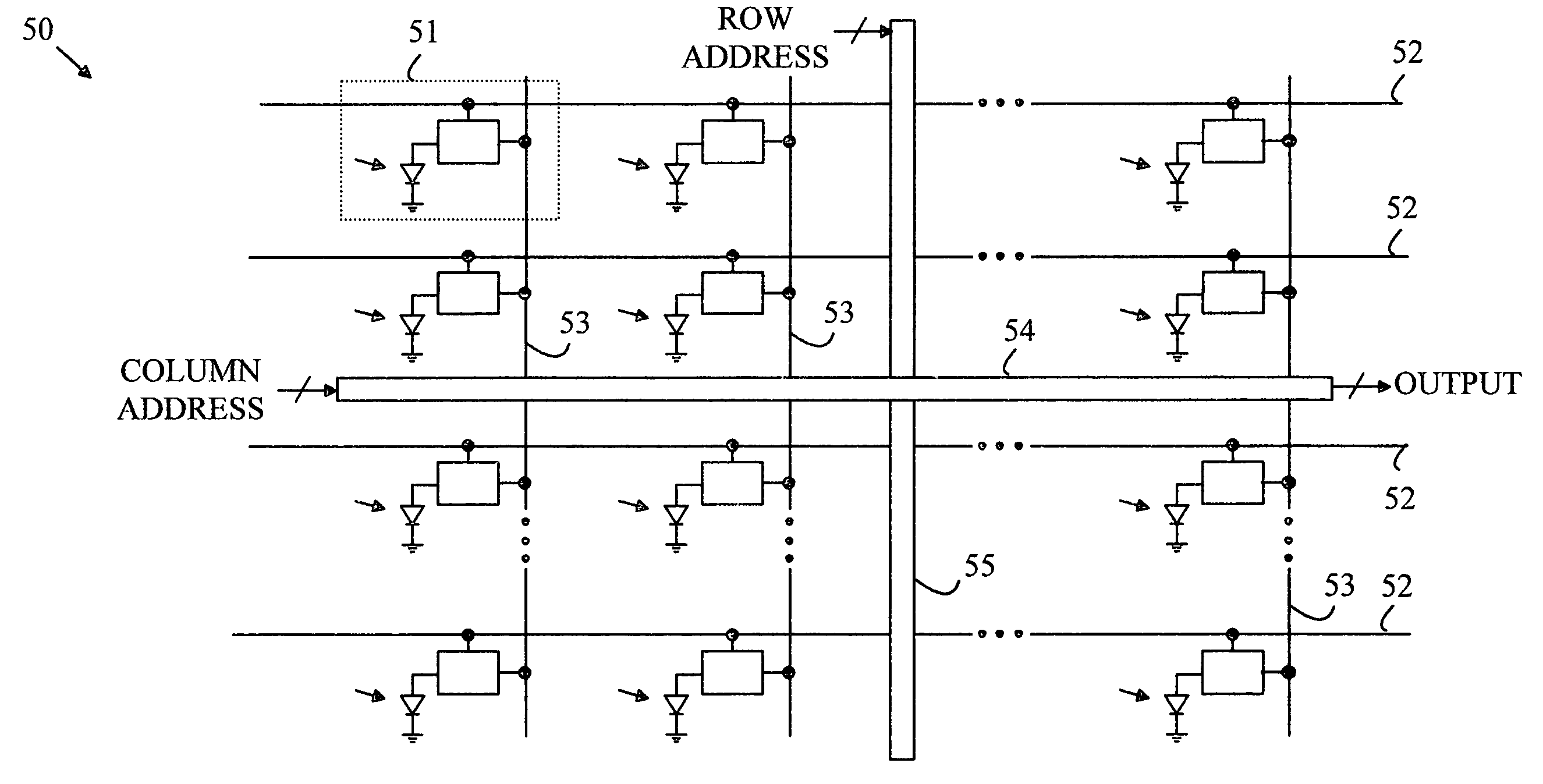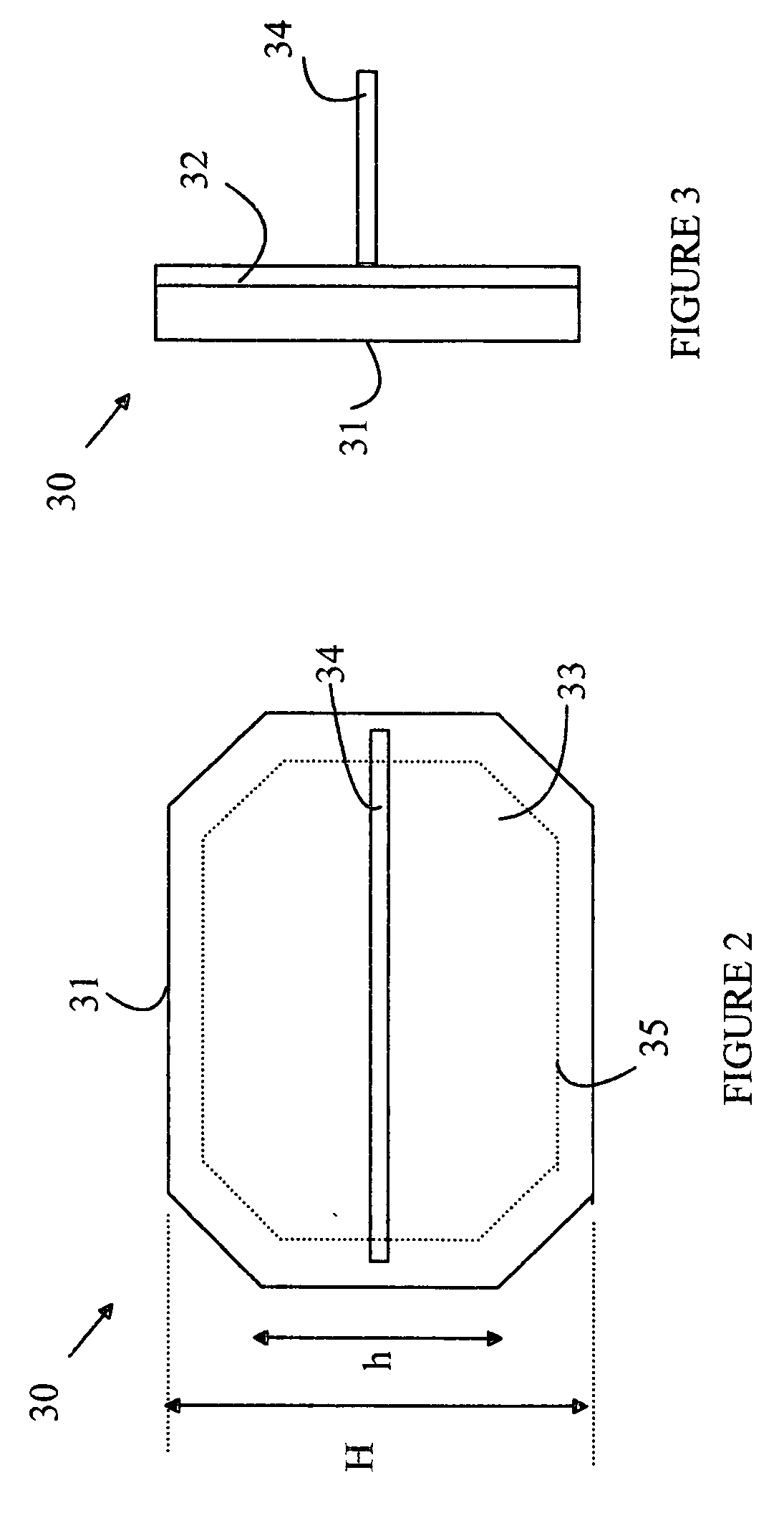CMOS image sensors adapted for dental applications
a technology of image sensors and dental examinations, applied in the field of dental examinations, can solve the problems of increasing the cost of dental examination, time, cost, equipment needed to process the film, and patient exposure to a significant dose of x-rays
- Summary
- Abstract
- Description
- Claims
- Application Information
AI Technical Summary
Benefits of technology
Problems solved by technology
Method used
Image
Examples
Embodiment Construction
[0017]The manner in which the present invention provides its advantages can be more easily understood with reference to FIG. 1, which is a block diagram of a prior art conventional CMOS image sensor. CMOS image sensor 20 includes a two-dimensional pixel array 21, which is the active area for image measurement, and some peripheral circuits that do not contribute to image sensing. These,circuits generally include a logic controller 24, and row and column decoders 22 and 23. The individual pixels are read out over bit lines that terminate in a row decoder / sense amplifier. Sensor die 25 is normally rectangular, and the pixel array normally does not extend to all four edges of the die.
[0018]Light from the image generates a charge signal inside each pixel. After a fixed integration time, the pixel charge signals are read out from the array and are eventually digitized to form a digital image. The readout of the pixel array is facilitated by the row and column decoders, and operates much l...
PUM
 Login to View More
Login to View More Abstract
Description
Claims
Application Information
 Login to View More
Login to View More - R&D
- Intellectual Property
- Life Sciences
- Materials
- Tech Scout
- Unparalleled Data Quality
- Higher Quality Content
- 60% Fewer Hallucinations
Browse by: Latest US Patents, China's latest patents, Technical Efficacy Thesaurus, Application Domain, Technology Topic, Popular Technical Reports.
© 2025 PatSnap. All rights reserved.Legal|Privacy policy|Modern Slavery Act Transparency Statement|Sitemap|About US| Contact US: help@patsnap.com



